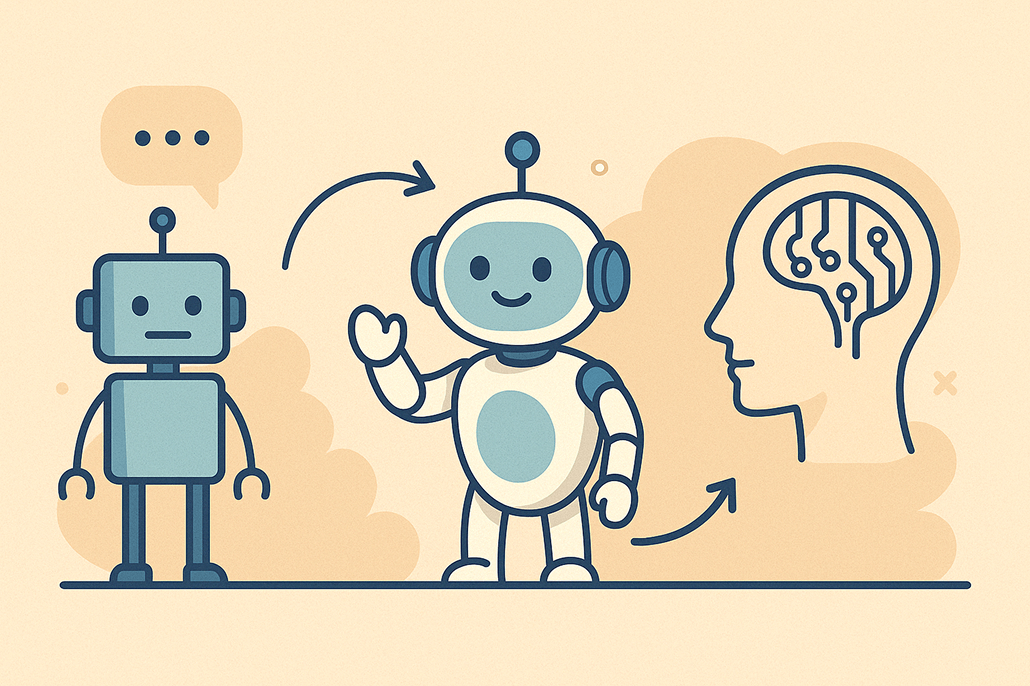Let me be honest with you — I used to think chatbots were just glorified FAQ pages wrapped in a floating chat bubble. They annoyed me more than helped. But that was years aago.
Today, AI chatbots are in a completely different league. They’ve gone from robotic scripts to intelligent assistants that can handle sales, support, lead generation, and even emotional support — yes, really. So if you’re still picturing Clippy from Microsoft Word or those frustrating “How can I help you?” bots, it’s time to update your mental image.
In this article, I’m going to walk you through the real story behind AI chatbots — where they came from, what they can (and can’t) do today, and where they’re headed next. Whether you’re building one for your site or just trying to understand the hype, I’ll give you the raw truth.
The Origins: From Decision Trees to Conversational Agents
To understand AI chatbots, you have to go back to their roots.
Early “chatbots” weren’t intelligent at all. They were rule-based systems — like interactive phone trees. You pressed 1 for billing, 2 for support, and so on. On websites, these bots simply matched keywords and spat out pre-written responses. There was no understanding, no memory, and definitely no personality.
One of the earliest chatbots was ELIZA, built in the 1960s. It mimicked a psychotherapist using pattern matching, but it had zero comprehension of what was being said. Still, it sparked the imagination — and 50 years later, here we are.
The AI Breakthrough: When Chatbots Got Smart
The real transformation happened with the rise of Natural Language Processing (NLP) and machine learning. Tools like GPT (Generative Pre-trained Transformer) changed the game.
Now, instead of hardcoding every possible input and output, developers could train chatbots on vast amounts of real-world conversation. AI could learn tone, context, intent — and even generate nuanced replies.
Today’s best chatbots don’t just respond — they converse.
They understand the difference between:
- “Cancel my subscription”
- “I want to pause for a month”
- “I’m thinking about switching”
…and they respond appropriately. That’s real progress.
What AI Chatbots Can Do Today — The Real Deal
Let me be clear: AI chatbots are not magic. They’re powerful, yes — but they’re tools. And like any tool, they work best when used the right way.
Here’s what modern AI chatbots can do well:
- Answer complex questions based on real data
- Guide users through multi-step processes (like booking, onboarding, etc.)
- Qualify leads by asking contextual questions
- Handle support tickets without needing a human
- Personalize interactions based on user behavior or past chats
- Translate languages, summarize content, and even write emails
And when built right, they can run 24/7, never get tired, and scale across thousands of users instantly.
But…
Here’s what they still struggle with:
- Understanding nuance in emotionally loaded conversations
- Long-term memory — unless specifically designed for it
- Complex decision-making that requires human judgment
- Staying 100% factual (AI hallucinations are real)
This is why hybrid models — AI + human — still dominate serious business use cases. The AI handles volume; the human handles exceptions.
The Psychology Behind the Chatbot Boom
Why are chatbots so effective?
Because people don’t want to fill out a form. They don’t want to dig through pages. They want fast answers in plain English.
AI chatbots meet people where they are — in a chat window, using natural language, without pressure. And when done right, they build trust faster than most landing pages ever could.
There’s also something deeply psychological about talking to “someone” — even if it’s not human — and being heard.
The Future: Smarter, Deeper, Everywhere
Here’s where it gets wild.
The next generation of AI chatbots will be:
- Context-aware across sessions (long-term memory)
- Emotionally intelligent, adapting tone and approach
- Proactive, not just reactive
- Fully voice-integrated, not just text-based
- Embedded everywhere — websites, apps, glasses, cars, homes
Imagine visiting a SaaS site and your AI assistant already knows your business size, what plan you’re on, your support history, and what feature you’re likely to care about next.
That’s not sci-fi — it’s 2026.
Should You Use an AI Chatbot?
Short answer? Yes. But with intention.
If you’re running a website — especially in eCommerce, SaaS, coaching, or consulting — an AI chatbot isn’t a luxury anymore. It’s a competitive edge.
But don’t just install any chatbot plugin and call it a day. The ones that work are trained, tested, optimized, and treated like digital employees.
Final Word + a Tool I Actually Recommend
I’ve tried a dozen chatbot builders. Some were bloated. Some broke. Some were way overpriced for what they offered.
The one I personally use and recommend for WordPress sites is AIWU.
- It’s fast.
- It’s simple.
- It actually works.
If you’re just starting, the FREE version already does the job:
WordPress ChatBot – FREE version
If you want full power — fine-tuning, design customization — go PRO:
WordPress ChatBot – PRO version:
Set it up in minutes. Train it on your site content. Watch it engage visitors like a real assistant. No coding needed.

